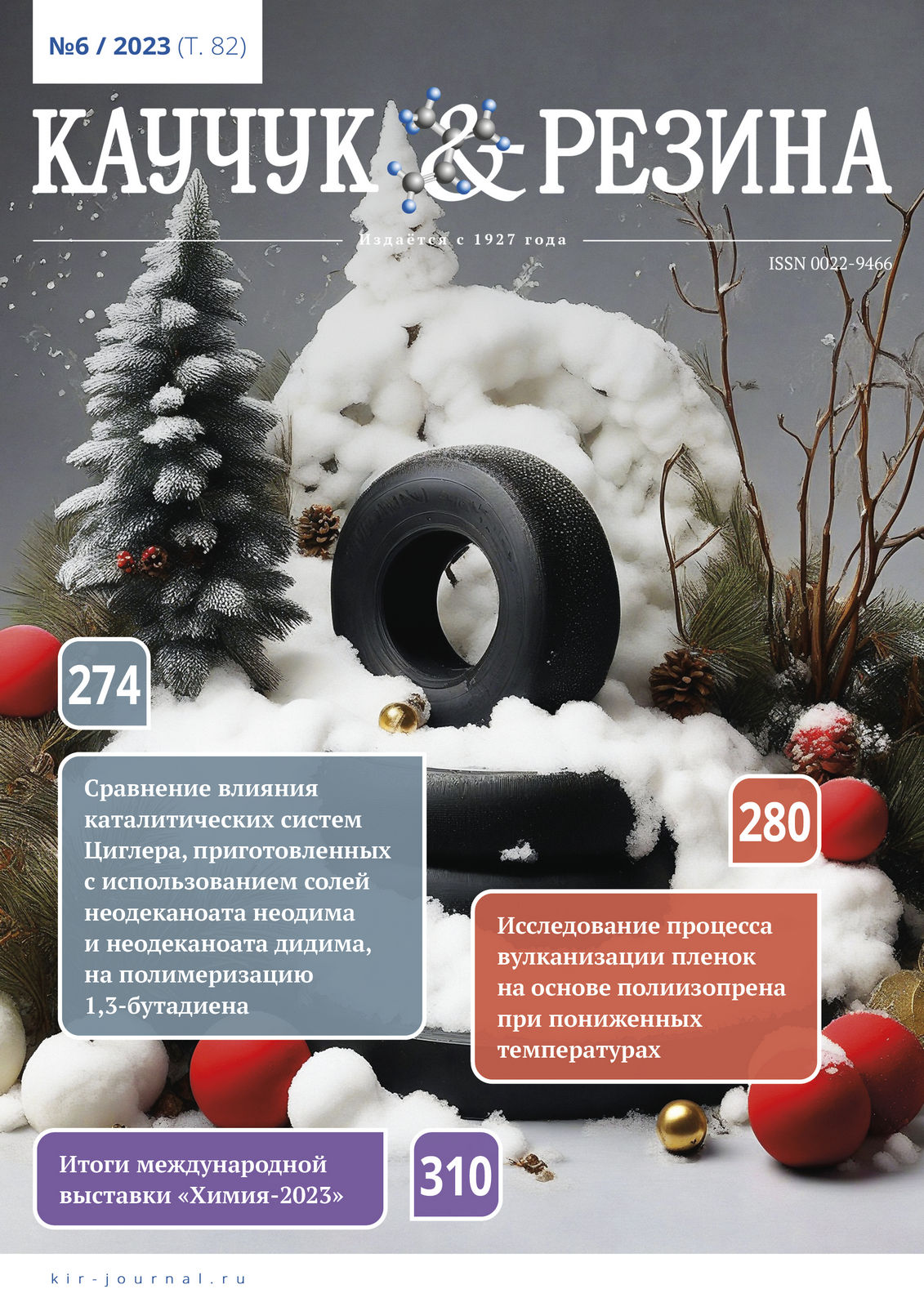A Comparison of the Effect of Ziegler Catalytic Systems Prepared Using Neodymium Neodecanoate and Didymum Neodecanoate Salts on the Polymerization of 1,3-Butadiene
Published 2023-12-25
How to Cite
Abstract
In Ziegler catalytic systems consisting of rare earth component neodecanoate, diisobutylaluminium hydride (DIBAH), triisobutylaluminium (TIBA), piperylene (PP) and ethylaluminium sesquichloride (EASC), neodymium neodecanoate (NDNd) and didymum neodecanoates (NDDi) were compared with a different ratio of neodymium and praseodymium (90 to 10 % and 75 to 25%, respectively), relative to their activity during polymerization of 1,3-butadiene and the properties of the resulting polybutadienes. For these systems, the effect of Nd/Pr ratios in neodecanoate on the activity of the catalyst and the microstructure of the polymer was studied. The content of cis-1,4-, trans-1,4- and 1,2-links in samples of 1,4-polybutadiene was determined by infrared spectroscopy (ISS). To determine the molecular characteristics of 1,4-polybutadiene, the method of gel-permeation chromatography (GPC) was used on a gel chromatograph of the company «Waters» of the Breeze system. The elemental content of individual REE in the initial REE oxides was determined on an atomic emission spectrometer with inductively coupled plasma ICAP 6300 DUO Thermo fisher scientific. High polymerization activity was found for all the studied catalytic systems – the content of cis-1,4 was 97 % or higher. The highest content of cis-1,4 in 1,4-polybutadiene of 98,1 and 98,0 % was found for the NDNd and NDDi90/10 systems, respectively. The microstructure and molecular characteristics of the synthesized polymers are at the level of the BR-Nd industrial design.

